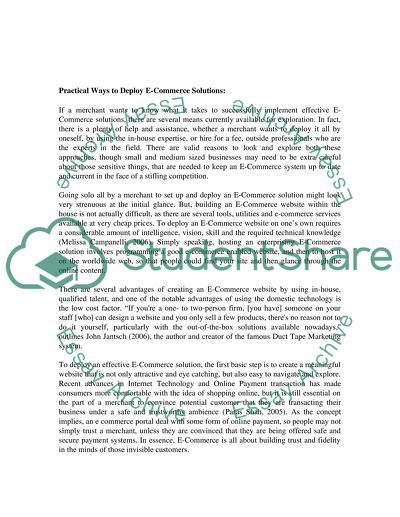Cite this document
(“Deploying E-Commerce Solution Essay Example | Topics and Well Written Essays - 2250 words”, n.d.)
Deploying E-Commerce Solution Essay Example | Topics and Well Written Essays - 2250 words. Retrieved from https://studentshare.org/miscellaneous/1499345-deploying-e-commerce-solution
Deploying E-Commerce Solution Essay Example | Topics and Well Written Essays - 2250 words. Retrieved from https://studentshare.org/miscellaneous/1499345-deploying-e-commerce-solution
(Deploying E-Commerce Solution Essay Example | Topics and Well Written Essays - 2250 Words)
Deploying E-Commerce Solution Essay Example | Topics and Well Written Essays - 2250 Words. https://studentshare.org/miscellaneous/1499345-deploying-e-commerce-solution.
Deploying E-Commerce Solution Essay Example | Topics and Well Written Essays - 2250 Words. https://studentshare.org/miscellaneous/1499345-deploying-e-commerce-solution.
“Deploying E-Commerce Solution Essay Example | Topics and Well Written Essays - 2250 Words”, n.d. https://studentshare.org/miscellaneous/1499345-deploying-e-commerce-solution.


